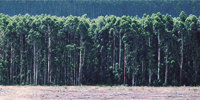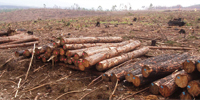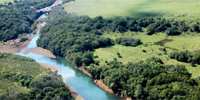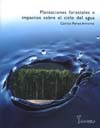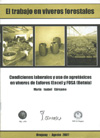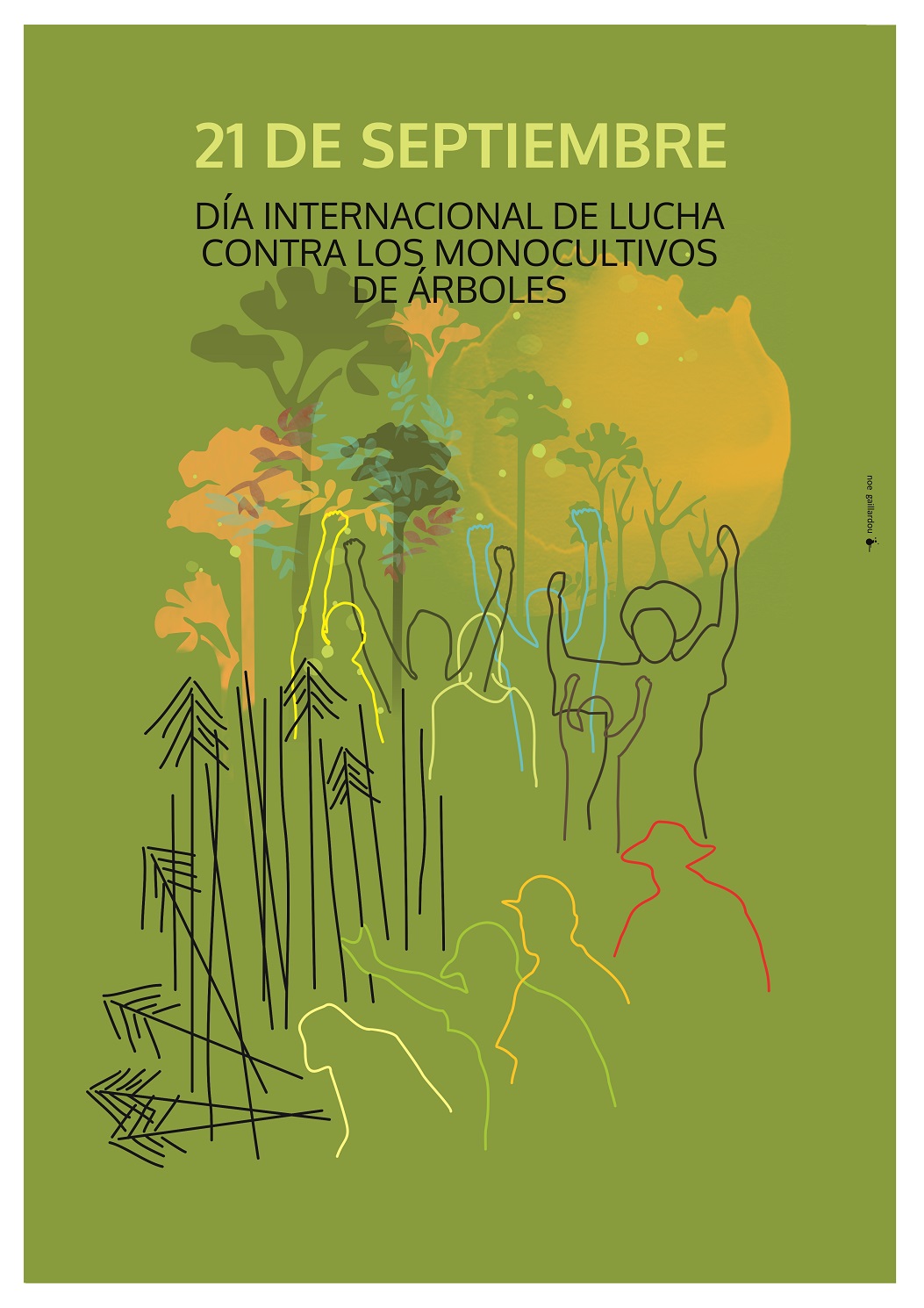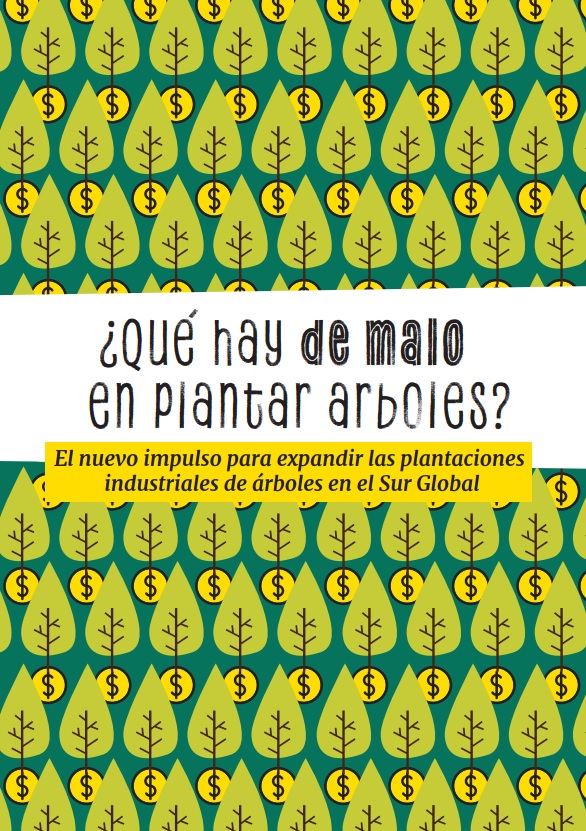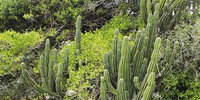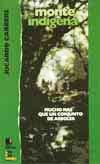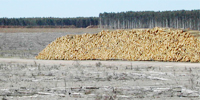Monoculture tree plantations continue to advance over the Uruguayan grasslands and now occupy almost one million hectares of land that was previously assigned to the production of food. On several occasions we have made reference to the negative impacts of these monoculture plantations on the environment and its people and in Bulletin 139 we included recent evidence given by farmers and their families from the Department of Paysandu (see: http://www.wrm.org.uy/boletin/139/Uruguay.html ).
The increasing appropriation of land by large companies must be added to the negative social and environmental impacts of such monoculture plantations. Today, four foreign companies own almost 600,000 hectares of land -Stora Enso (Sweden-Finland), Arauco (Chile), Weyerhaeuser (USA) and Botnia (Finland)- making them the largest landowners in the country.
Recently, something hitherto unknown happened, showing up the way these companies operate: the sale by the Spanish company Ence of almost all its assets in Uruguay, as a way of addressing its serious financial problems in Spain. Up until that time, Ence was one of the county’s largest landowners, with a total of 160,000 hectares and a government-approved project to install a pulp mill. Its plantations had been subsidised, it had been exempt from taxes, it had been given a duty-free zone to install the mill, but it decided to leave and did so, pocketing all the benefits received through the sale of its land and plantations.
Ence’s assets were acquired by an consortium set up by two companies that up to then had been owners of a total of 110,000 hectares: the Swedish-Finnish company Stora Enso and the Chilean company Arauco. This sale –decided on and negotiated among three foreign companies– led to the establishment of the largest landholding in the history of the country: 253,000 hectares in the hands of a foreign consortium.
The objective stated by the Arauco/Stora Enso consortium is the installation of a gigantic pulp mill to be fed with eucalyptus plantations. This is to be the largest pulp megaproject in the world, as it implies the installation of a pulp mill able to produce 1.5 million tons of pulp (today the largest one produces 1 million tons). Given these dimensions, any accident, human error or mechanical breakdown would be catastrophic, while the level of emissions and effluents, however small, would involve an accumulation of impacts, of equally major dimensions.
These companies’ track records do not auger anything positive. Both companies are responsible for serious social and environmental impacts in the countries where they have established themselves. As examples geographically close to our country, mention can be made of the cases of Stora Enso in Brazil (Veracel) and Arauco in Chile (CELCO) and Argentina (Alto Paraná).
The installation of Stora Enso in the State of Bahía (Brazil) involved the expansion of monoculture eucalyptus plantations in the area, resulting in a series of serious social and environmental impacts. According to the Pataxó indigenous peoples who live in the area, the company appropriated lands with false deeds, cut down the native vegetation, poisoned and is still poisoning water sources with agrochemicals, causing the death of animals and fish. For their part, the peasants affirm that the company has only promoted land concentration, monoculture plantations and the eviction of human beings from the land.
The negative impacts caused by the company have been documented in detail in a report by the local organization CEPEDES (2008). The title of this report is graphic: “A story of illegality, indifference and profit! Social and environmental violation promoted by Veracel Celulose, the property of Stora Enso and Aracruz Celulose) (see complete report at: http://www.wrm.org.uy/paises/Brasil/CEPEDES_2008.pdf )
The activities of the Chilean company Arauco in the Province of Misiones (Argentina) have also involved a series of negative social and environmental impacts both due to its pulp mill – the largest in the province – and its pine tree plantations. The local inhabitants coincide in denouncing strong headaches, allergies and respiratory diseases as common in the town, located a few kilometres away from the mill. They tell that there are days (and particularly, nights) when they can’t breathe and the smell is unbearable. They also refer to the low salaries paid by the mill and the repressive system prevailing there.
In Chile there are also innumerable complaints against the company lodged by local communities and mainly by the Mapuche people, who have been repressed and have had their territory taken over by the company. Arauco was also responsible for serious contamination in the Valdivia region, affecting the Rio Cruces sanctuary, a Ramsar site and the habitat of black-necked swans. Rio Cruces was one of South America’s most important nesting sites for black-necked swans and an important source of income from tourism for the local population. What had started with complaints by the community affected by the nauseating smell from Arauco’s pulp mill, ended in the mass death of black-necked swans and the ensuing negative tourist-related economic impacts in the area.
In spite of the well documented impacts of their activities in Chile and Brazil, these companies will surely affirm that in Uruguay their pulp mill will not contaminate and that their plantations have not had, do not have and will never have any negative impacts. Whoever wants to believe in fairytales .. may of course do so. But they must know that they are no more than fairytales.
Source: WRM’s bulletin Nº 143, June 2009

